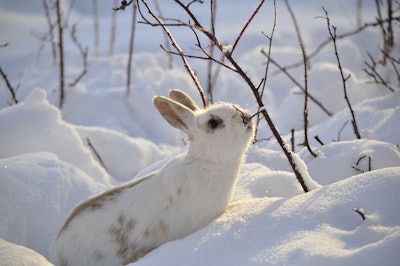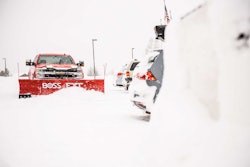 Photo: Pixabay
Photo: PixabayYour customers might think that the winter weather will keep pesky critters out of their landscape, but unfortunately, that’s not always the case.
While winter landscapes can come across as a fairly peaceful winter wonderland, there’s a lot going on below the surface and behind the scenes that customers might not be aware of.
Take a look at a few visitors your customers might find in their landscape this winter and how they can spot any damage they might inflict throughout the season.
On the ground and below
On the surface, meadow mice will begin to chew the bark off younger trees and shrubs, according to the Michigan State University Extension.
Because of their upper and lower incisors, noticeable up-and-down chewing marks will appear at ground level or just a slight bit above. If you or your customers notice their plants and trees are girdled – the bark is removed – all the way around or most of the way around, understand that the plant will die.
Taking a look below the surface, customers may discover voles. Voles will burrow under snow and mulch to eat the crowns of perennial plants if the soil isn’t frozen yet.
According to the Michigan State University Extension, if snow has covered your client’s lawn and food is in short supply for voles, they will begin to work under the snow and make trails into the turf. While the grass might look bad for a little while in the spring, this kind of tunneling won’t kill the grass.
Above ground
While rabbits may not immediately register in your customer’s mind as a pest, they can cause significant damage to a landscape if left unchecked.
Since rabbits are opportunistic eaters, they will eat readily available plants no matter the season. Along with the obvious signs, such as droppings and footprints, rabbits also tend to make a clean 45-degree angle bite off small twigs or young plants, according to the University of Missouri Extension.
Most damage done by rabbits is done close to the ground because of their size. Rabbits are, however, able to reach about 18 inches above the snow cover. If you notice the bottom of your customer’s trees look a little gnawed or see some of their newer plants missing some leaves, rabbits may be the perpetrators.
Other winter visitors your clients might see are deer. Deer prove to be a challenge in the springtime when your customer’s yards are bountiful and beautiful, but with food sources becoming scarce in the winter, deer may frequent your customer’s yards even more than usual.
Since these are larger animals, much of their visible damage will be found higher up on trees and plants. When standing on their hind legs, they are able to reach over 4 feet high if they are so inclined to forage that far up. Damage inflicted by deer chewing will differ from these other animals, as they only have lower incisors that meet a leathery gum on top.
Using a diagonal slice, deer will remove buds and twigs, and they typically feed on evergreens like yews, pine, white cedar, spruce, and more. The more tender buds of maple trees, dogwoods, willows, and aspens are also tasty favorites for them, according to the Michigan State University Extension.
The Michigan State University Extension also notes that deer are likely to cause even more damage to the landscape once snow has begun to fall.
“If snow is deep or stays on the ground for a long time, deer will be hungrier because food is more difficult to find,” according to an article from Michigan State University Extension. “It may be necessary to prevent deer damage to certain woody ornamental trees and shrubs even if the winter is not severe.”
For tips on different methods of repelling deer, click here.










